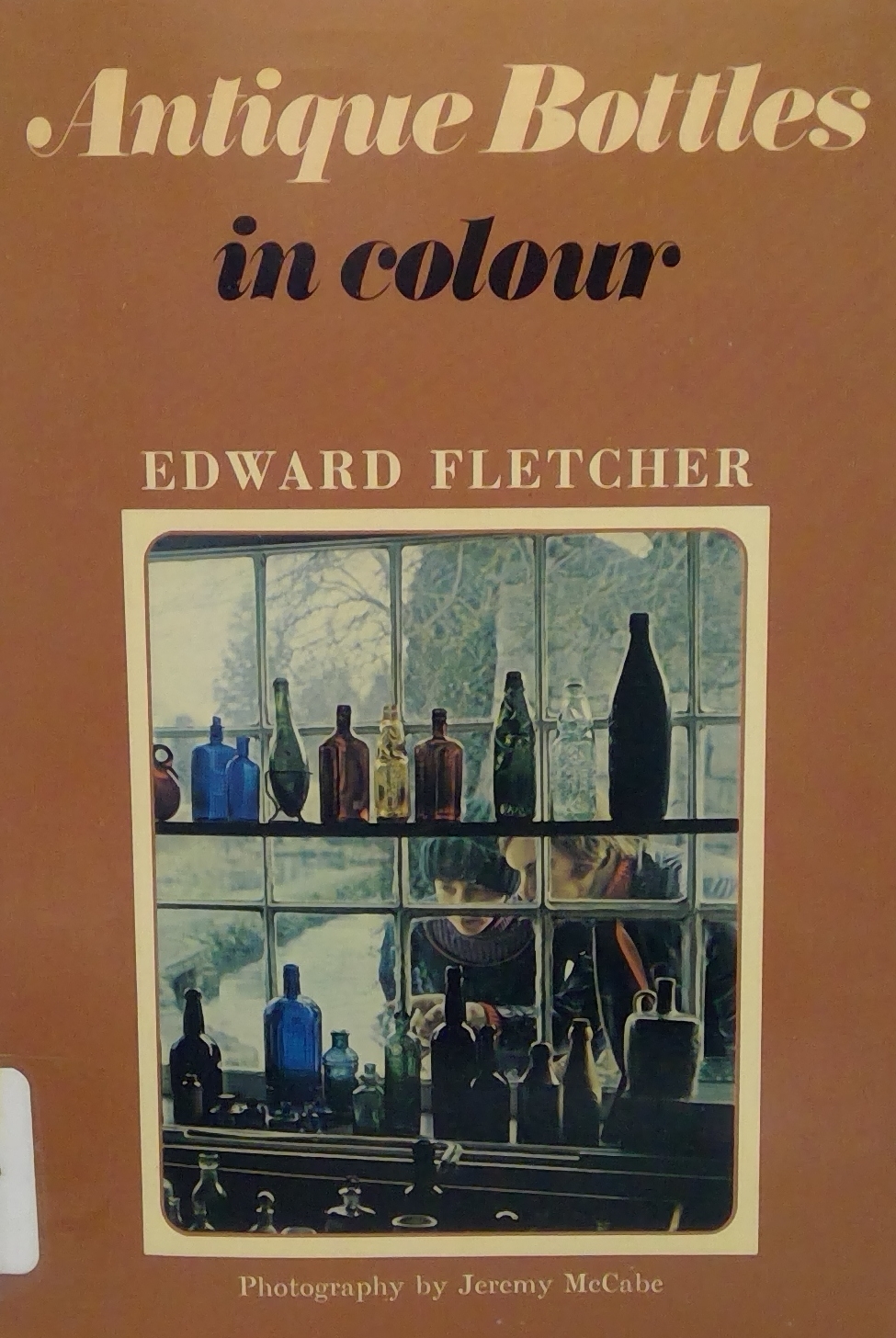-
-
-
-
-
-
-
-
-
-
-
-
Grab Box Book Reviews
-
-


Grab Box Book Reviews
Welcome to our book review page! This is our first cut at sharing information in the many books we have in our library collection. Our collection is boxed up and currently located in my storeroom. We have no active process or librarian to manage and share the contents and I have been wondering what can I do?
I have decided to proceed by chance. Each time I am ready to read a new book, I am going to choose and open a different box. I will then just reach in and extract a selection, take it home and consume the contents, and then share the results with you.
You are welcome to participate in this process by consuming my observations, and if you, as a member, find yourself intrigued, with time on your hands, I can pick at random a book for you to review. I hope you find this interesting!

“Antique Bottles in Colour” by Edward Fletcher and photography by Jeremy McCabe, Nico Mavroyenis, Frank Welch.
This is number 396 in our library, published by Blandford Press, copyright 1976, ISBN 0 7137 0793 3, is 166 pages in length, and a hardcover book 8 inches tall by 5.5 inches wide.
Edward Fletcher is known to bottle collectors throughout the world. He was founder of the British Bottle Collectors Club, former editor of Bottles and Relics News and his many books on the hobby are regarded as essential reading for all enthusiasts.
The author introduces us with the history of bottle making starting with the Egyptians and Romans. The journey by man to contain our various liquids such as oil, perfume and wine is interesting indeed. The challenge to seal the various vessels to prevent spills and spoilage fostered creative solutions.
The tools and techniques to make glass fostered a complete industry and competition between countries. These tools and methods are described, accompanied by illustrations, and at times are little confusing to follow. They were probably confusing to me since I am beginning this journey into the history of bottles. I am sure the more I read, the more knowledgeable I will become.
The author gives some insight into bottles used for medicine, mineral water, ink, and household bottles and jars. The development of figural bottles and the use of colored glass are described along with a glimpse of the lives of the men and boys that made the glass vessels.
The section on ink bottles was short but very informative for me. In Britain the Penny Post was introduced in 1840 at about the same time that steel-nibbed pens were replacing old-fashioned quill pens. When letter writing became a widespread habit, liquid ink began being sold by the bottle. One of the first vendors in Britain was Henry Stephens of London. He was selling liquid ink by the pint in stoneware bottles in the 1830s, and in the 1840s he advertised ink for sale in ‘penny glass bottles.’
To sell for a penny, the ink had to be in the cheapest container possible. This proved to be a small glass bottle from a two-piece mold. Its neck was sheared from the blowpipe to leave a jagged rim which bit into a cork to provide a leak-proof closure. An eight-sided bottle proved to be the most popular.
Prior to that it is still a mystery to me how ink was acquired by folks. In 1688, Charles Holman was granted a patent for the manufacture of black ink from ‘a powder mixed with water, beer, ale or wine.’ This is the form that most ink was sold throughout the eighteenth century when ornate and expensive glass inkstands and inkwells in which one mixed one’s own ink were on sale.
While not strictly a book on inkwells or ink bottles, I enjoyed the educational experience. The color pictures and descriptions will aid me when antique hunting in the future.